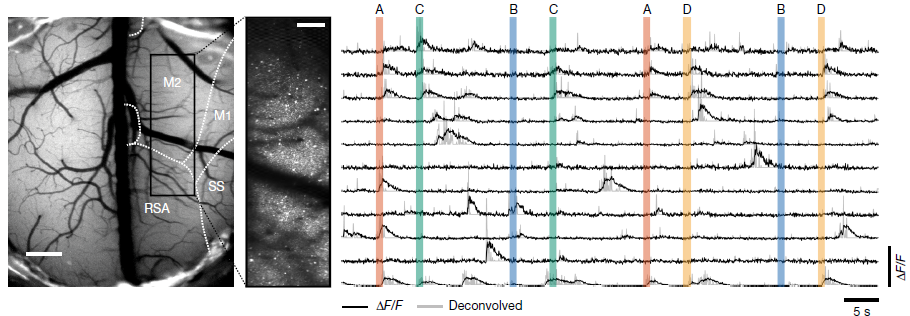
We are excited to announce the publication of our article, “Volatile working memory representations crystalize with practice,” in Nature. This work was a collaborative effort between the Golshani Lab at UCLA and the Vaziri Lab at The Rockefeller University, led by Dr. Arash Bellafard. The project’s success was driven by the dedication and inspiration of the Golshani Lab team, along with advanced two-photon imaging resources provided by the Vaziri Lab.
In this study, we aimed to understand the neural dynamics of a large population of neurons involved in working memory (WM) over long timescales. We investigated the causality and stability of WM representations as animals became familiar with the task. To do this, we trained head-fixed mice to perform an olfactory delay-association WM task and recorded the activity of same population of neurons over many days.
In collaboration with the Vaziri Lab, Dr. Bellafard of the Golashani Lab conducted in-vivo calcium imaging sessions on the head-fixed mice and performed the subsequent data analysis. Using a multiphoton mesoscope, they obtained two-photon calcium imaging recordings of large neural populations. These recordings revealed task-sensitive neurons in the secondary motor cortex (M2). Further analysis and decoding techniques demonstrated the emergence of causal WM-related activity in M2 during the late-delay period.
Most notably, we used a light-bead microscope (LBM) with two-photon excitation to perform simultaneous volumetric calcium imaging of up to 73,307 M2 neurons within a 2000 x 2000 x 450 μm volume. This technique allowed us to record from 30 axially separated voxels over 500 μm within 200 ns by using axially separated and temporally delayed excitation foci. Our findings revealed that these volatile working memory representations crystalize as animals practice and become proficient in task performance.
Read our full publication here.
Congratulations to the entire team!
